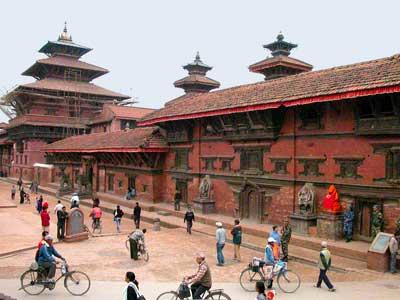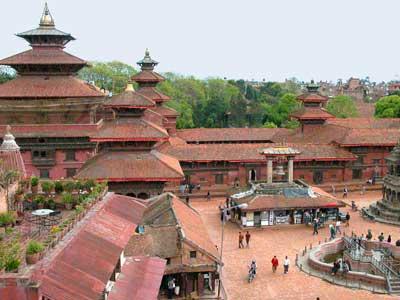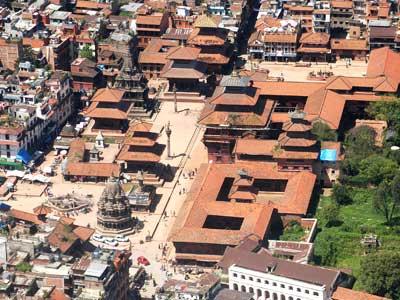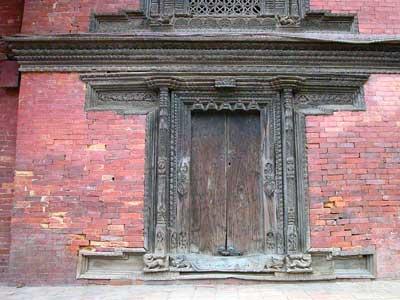Patan Royal Palace Complex
The Patan Royal Palace Complex was constructed in the 17th century as part of the extensive building program of King Siddhinarasimha Malla, which was continued by his son Srinivasa. The Malla kings created their palace by enlarging and enhancing a group of buildings at an ancient crossroads in the center of Patan. The complex contains three courtyards, built at different times and each with its own character: Sudari Chowk (1647), Mul Chowk (1666), and Keshav Narayan Chowk (1734). The earliest of the three, Sundari Chowk is known for its spectacularly carved stone bath and wood ornamentation of animals and deities. The southern and northern wings were added in 1792 and 1820 respectively, demonstrating European influence with regular windows, shutters, a fireplace, and a grand reception hall on the upper level. The three pagoda temples and many shrines of Patan Royal Palace are still active today, including Degutale, a principal Tantric place of worship. Despite its continued use, the Patan Royal Palace was placed on the UNESCO World Heritage in Danger List in 2003 because of structural decay and the threat of urban development.
2006 World Monuments Watch
Although aware of the precarious state of the palace, Nepal’s Department of Archaeology lacked the resources and expertise to initiate restoration at the site. WMF placed the Patan Royal Palace Complex on the Watch in 2006 and provided the catalyst for the conservation project. Agrant from WMF brought recognition and support from the Nepalese government. We joined a local partner, the Kathmandu Valley Preservation Trust (KVPT), to produce a multiphase preservation plan for the palace. Despite political instability in the region, the KVPT received approval from the government for the proposed work and began urgent restoration of the roof and stone features, which had been badly damaged by water infiltration. The team had to remove treatments applied by previous, careless conservation attempts that were deteriorating the carved surfaces. Work then continued with the cleaning of stone and wood elements, the elimination of biological growth, and further structural stabilization.
Patan is one of three palace complexes remaining in Kathmandu Valley and it is the only one that has maintained its original layout and urban context through the centuries. The palace contains a wealth of history in its architectural details. The stone stepwell in the rear garden was part of the city’s sophisticated water supply system, dating from the Licchavi period (300–879). The north and south wings of the complex survive as the earliest known examples of European influence on Nepalese architecture. Beyond its extensive and impressive legacy, the palace remains an integral part of city life in Patan. The courtyard of Keshav Narayan Chowk is now a museum for the royal collection, the courtyard of Mul Chowk houses the Department of Archaeology Conservation Office, and the north wing has been transformed into a government high school. Since the Patan Royal Palace Complex was repaired and preserved, both Nepalese history and modern life have been enriched.




